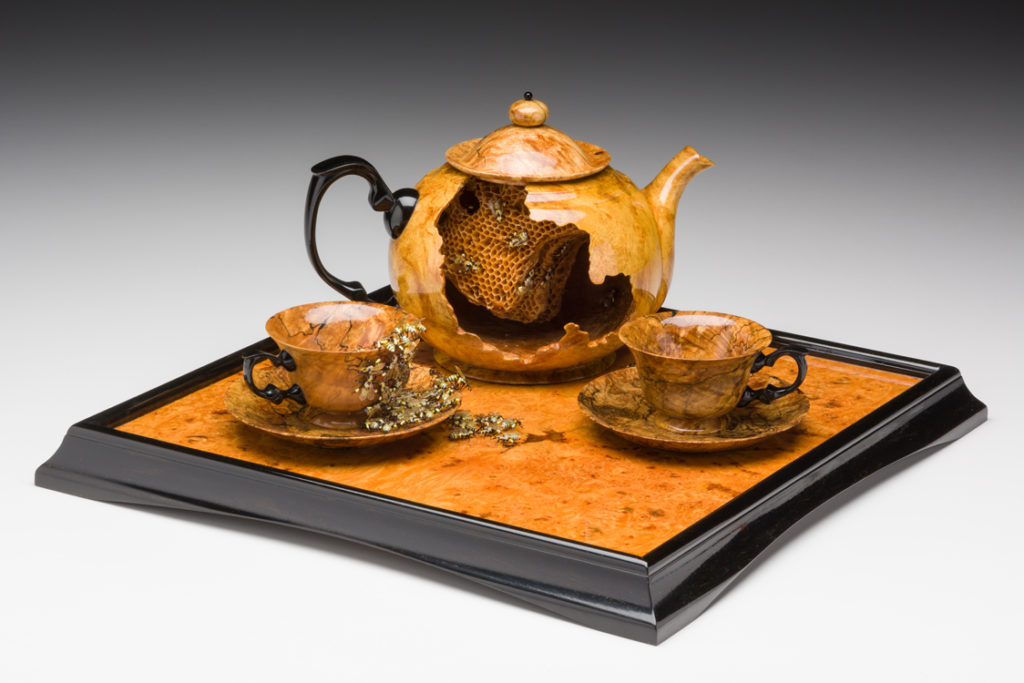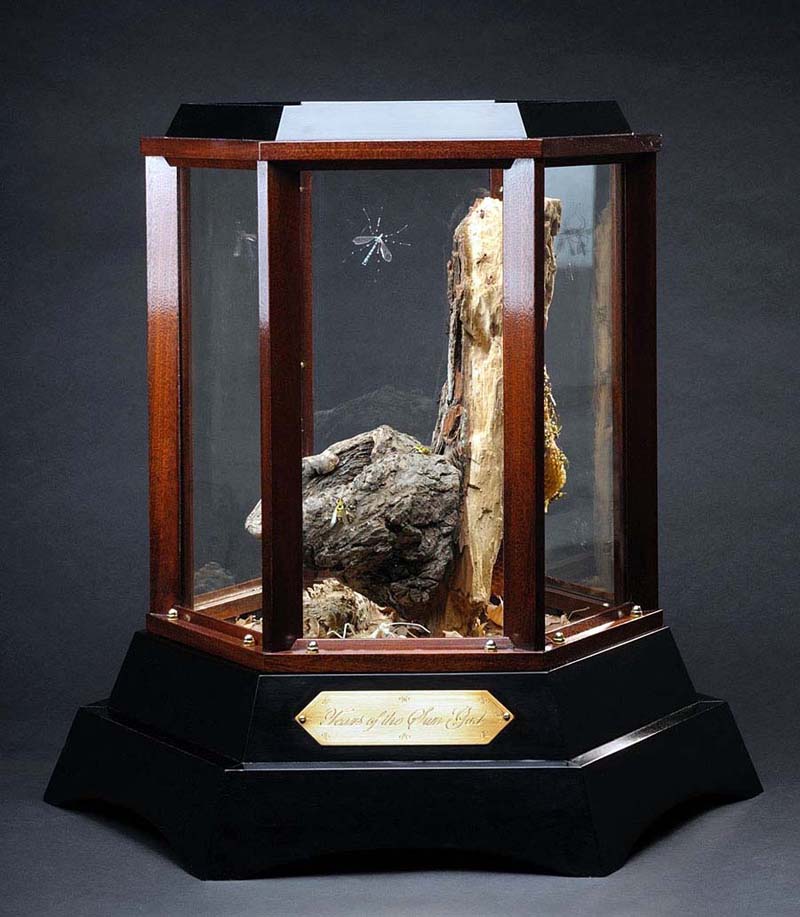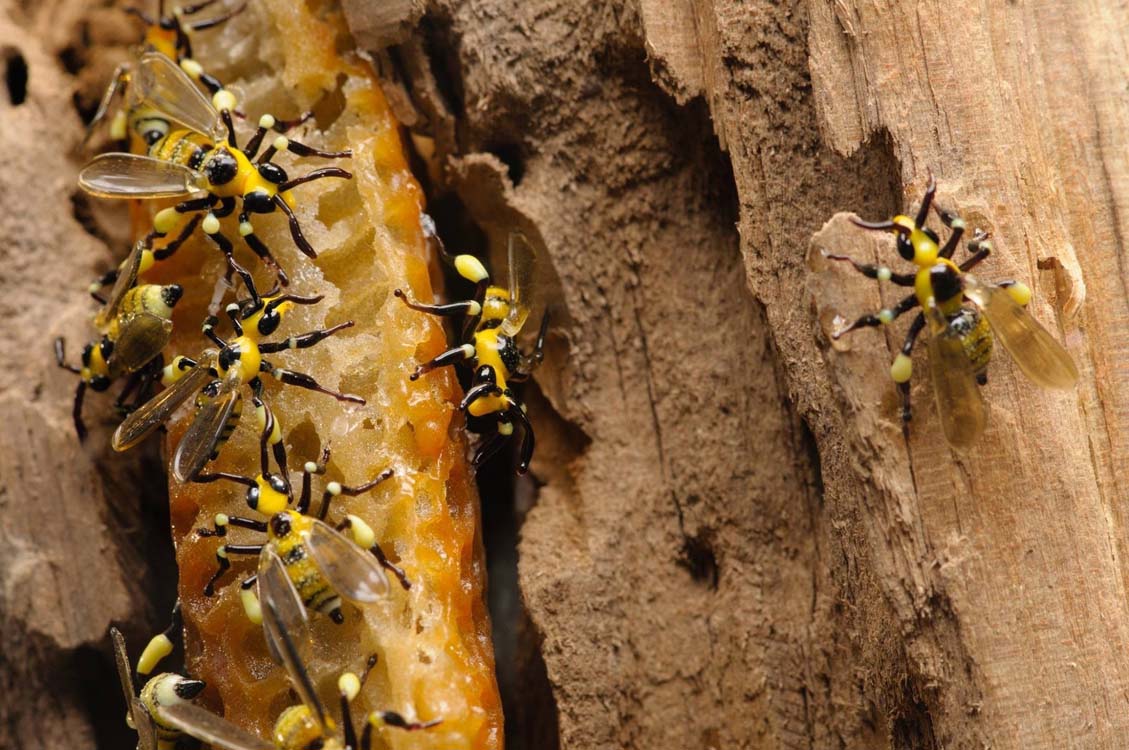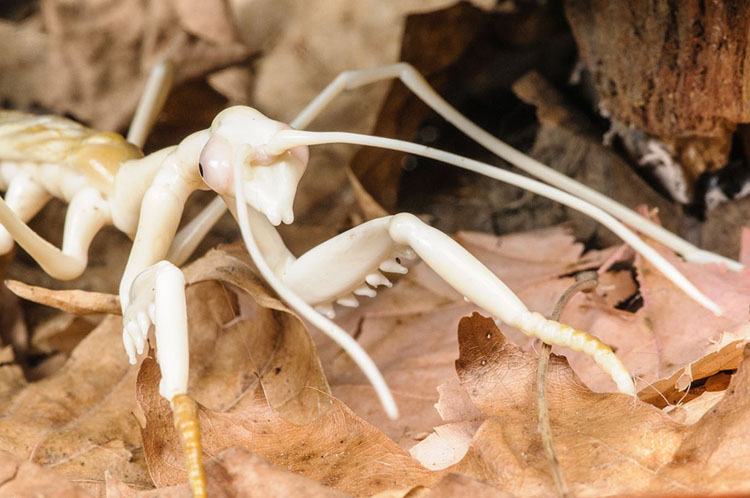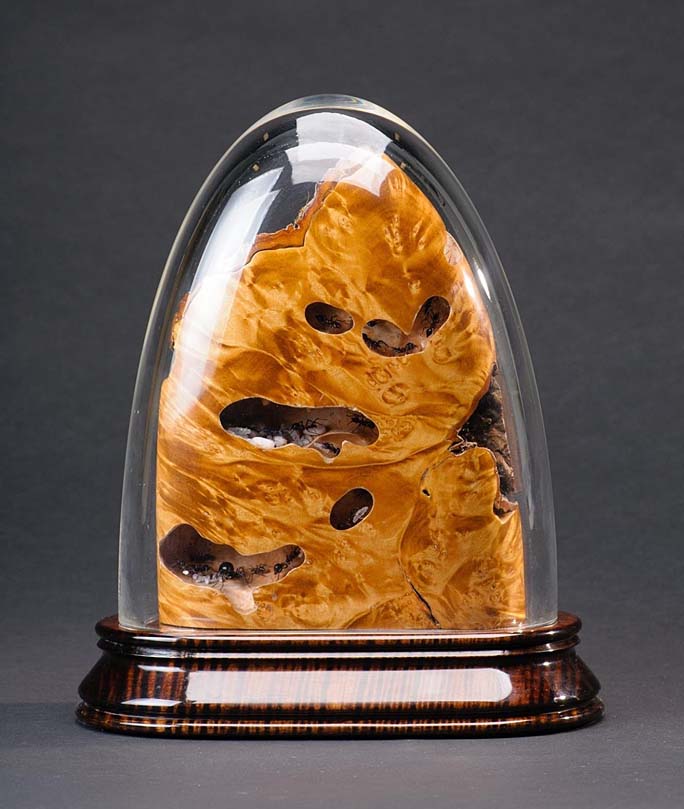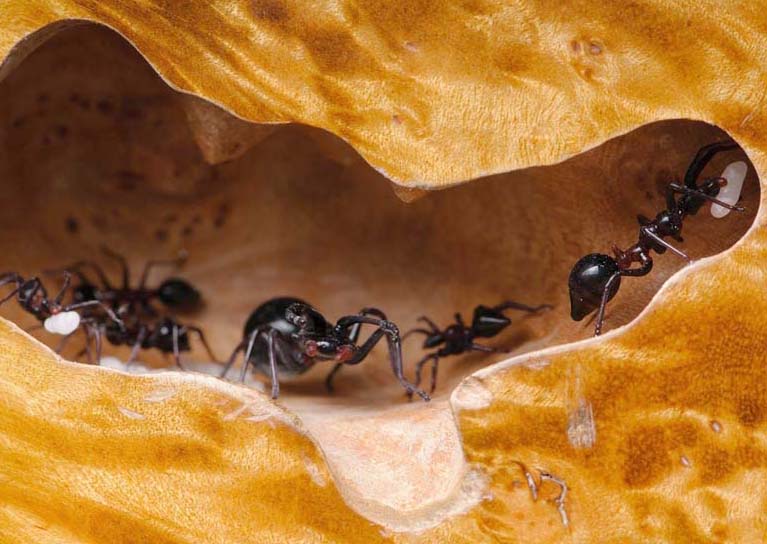Artists Michael Mangiafico and Edward Pinto collaborated on this spectacular sculpture, Honey Pot Tea Set, bringing to bear their respective talents in glass and wood. Mangiafico is a glass artist and teacher working in Pittsburgh PA. He is known for his torchworked sculpted insects, such as the bees in this sculpture. Pinto is a sculptor and architectural restoration craftsman in Pittsburgh. He is a master of all trades—woodturning, cabinetry, carving, and metalsmithing, to name a few.
Honey Pot Tea Set consists of a figured wood tea set presented on a framed tray/pedestal. The teapot, cups and saucers are turned from spalted maple burl and have ebony accents. The tray/pedestal is veneered with spalted maple and trimmed in carved ebony. These elegant forms and materials are juxtaposed with an image of decay and infestation. There is a large jagged hole in the teapot side. In the cavity, bees have built a large honeycomb and are swarming over a cup and saucer.
We spoke with Mike Mangiafico and Ed Pinto to learn more about this sculpture.
Kamm Teapot: Talk about the idea for the Honey Pot Tea Set.
Mike: The idea was to make a tea set with wood and glass. The goal was to do something special for the teapot exhibition at the Morgan Gallery[i] (Pittsburgh), so there was a deadline and timeframe. The idea evolved. This was a major turning point. We brought content to it, the whole unit had a story—a forgotten tea set that bees had taken over. We wanted to tell a story—the bees had their own tea party.
Kamm Teapot: Had you and Ed collaborated before?
Mike: Yes. We’ve done a number of them. And have done more collaborations since this one. Ed was building reliquaries for my glass.
Kamm Teapot: What are your backgrounds?
Mike: My background has art school in it. Ed has done restoration work, plaster work, he is great at mold making. He restores old mansions, turns balusters. I met Ed in 1986-89. We were both working in a stained-glass studio, doing architectural jobs. Eddie loves old stuff; he drives an old car.
Kamm Teapot: Could you talk about the making of the Honey Pot sculpture? The craftsmanship and materials have a significant impact.
Mike: Material mimicry. Ed likes the realism. The super-realistic flamework of materials and the spalted maple burl pushed us out of our comfort zones. That wood is hard to turn on a lathe, it’s very crumbly. We had to harden the wood with resins. The tray is veneered, it has a lacquer finish on the hand-carved frame.
The glass bees were worked individually with a torch. I wanted to make as many as possible in the time frame, to create a swarming image. These bees are more whimsical. I got better at it, now I can make specific species.
The honeycomb is made of glass. We initially thought to do a lost-wax casting. I found an old honeycomb in a barn, but that didn’t work, it was too delicate, not able to get the investment out. What did work was a freeze and fuse method. Using a latex rubber mold, we made a slurry of powdered glass and water, and froze it. This “glasscicle” was then baked in the oven.
We drank a lot of tea making this sculpture!
Ed: I really enjoyed making the Honey Pot Tea Set. It was my first foray into vessel turning, and we could not have picked a more difficult material.
We have made several more large intricate works in that vein, and hope to do more. We are both interested in art that includes narrative and beauty, but is exceedingly technically challenging. Mike and I push each other to do work that is at the edge of both our abilities, often working ridiculous hours to achieve our vision.
The narrative of Honey Pot Tea Set developed as we worked, mainly during the development of the Victorian style of the tea set, with Asian influences in the pot itself. It suggests high tea in the garden, abandoned through some unknown event. Unknown, because of course we were focused on the bees’ point of view, not the people who left it behind. It is a simple story and translated well into just looking at the piece and understanding what had happened.
Our next large piece, Tears of the Sun God, also tells a story through the eyes of the bees. A disaster has befallen them, but they press on.
We’re currently working on cast glass work centering on human faces. But I hope to return to the reliquary series that included Honey Pot, Componotus ligniperda, and Tears. Like the Victorian houses I work on, I love Victorian collections, wunderkammer, and terrariums. Mike’s insects are perfect inhabitants in my environments.
Mike: Ed Pinto and I made Tears Of The Sun God, illustrating the fauna of the Laurel Highlands here in Pennsylvania inside a reliquary of a fallen tree stump. I got the idea for the title for this piece from the belief in ancient Egypt that Honey Bees originated from the tears of Ra striking the desert floor.
Componotus ligniperda refers to a species of carpenter ant. This reliquary comprises a glass bell jar on a wooden base that contains an ant habitat. A large piece of burlwood has been carved with a smooth surface to reveal the beautiful woodgrain and cavities where ants are nesting. The top side has a “live edge” where ants are visible among lichens.
These reliquaries–Tears of the Sun God and Componotus ligniperda–give context to the Honey Pot Tea Set in the Kamm Collection. We are grateful to Ed and Mike for sharing these artworks with us and for their contributions to this blog post.
Further Reading/Viewing:
Corning Museum of Glass, flameworking video with Michael Mangiafico and Wesley Fleming.
Edward D. Pinto, Sculptor, Architectural Restoration Facebook page.
Michael Mangiafico, Fig Studios: Forms in Glass website.
Shaw, Kurt. “Shadyside Gallery’s Annual Teapot Exhibit is Bold, Brash, Beautiful.” TRIB LIVE, 19 April 2014.
Notes:

